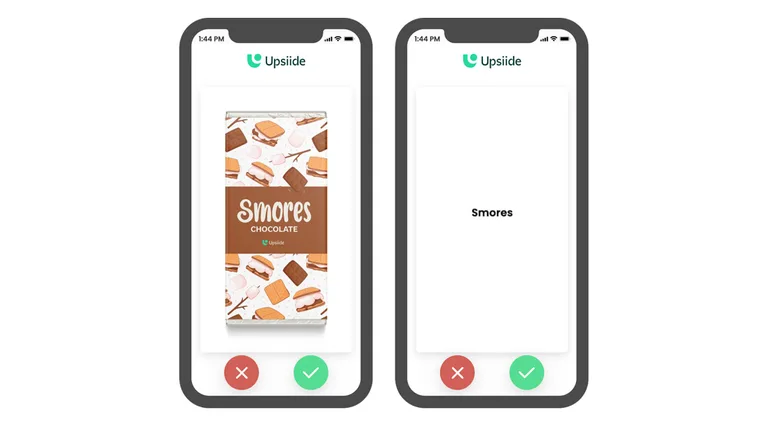Writing a concept for market research can make or break your concept testing results. A clear, well-written concept helps you evaluate product potential, messaging, and positioning with real consumers. In this guide, we’ll explain what a concept actually is, how to write a good concept description and share best practices for writing your own concepts.
What Is a Concept in Market Research?
In market research, a concept is a market-ready representation of your product used to test how it would perform. Think of a concept as a near-finished product in research form: name, pack, price, and one clear benefit.
Your number one priority when designing a concept board is to ensure it’s truly representative of what consumers will experience. If it’s not on the front of the pack or something you would actually say in a paid social ad, don’t include it. To generate results that are predictive of in-market performance, you need to test what you genuinely plan to execute in market.
Patrick Lambert
SVP of Customer Success and Commercial Intelligence at Dig Insights
Want to learn what concept testing actually takes? Read this article to learn some key definitions, use cases and methods.
How an idea becomes a concept
The idea stage
Every innovation starts as an idea—a simple benefit or value statement with no branding, price, or executional details. At this stage it’s not polished; you’re clarifying the consumer value you might bring to market.
The concept development stage
Before you assemble a full concept, you run component tests to strengthen the building blocks you’ll later combine. Test names, flavors/variants, single claims, and pack routes in isolation so each read is clean and unbiased.
The concept stage
Once components are proven, assemble a market-realistic concept—the closest simulation of the shelf/PDP experience with a pack image, product name, one clear benefit line, 2–4 RTBs, and a price. This composite is what shoppers will effectively see at launch, so it’s the stimulus you should use for concept optimization and, later, validation.
Old ways of writing a concept
Back in the 90s, concept writing standards were a bit different. Since quite a lot of work was done manually, raw concepts had to be described to potential customers in detail.
A single concept description usually needed to contain these things:
- Insight monologue
- Description of the innovation
- Benefits of the innovation
- Extra information (e.g., price or important warnings)
- A closing line
- An image
This is why these kinds of lengthy concepts don’t work in survey research anymore:
- They take a lot of work to write—this makes your innovation process bloated and overly complex.
- They’re not reflective of real in-market situations —when people actually look at your product on the shelf, they’ll never see this much information at first glance.
- They’re too complex—if your idea performs well, you don’t know which elements of the concept drove that performance (i.e., is it the header or the image that made people choose the concept?).
The anatomy of a good concept description
1) Product Name – the on-shelf name consumers will actually see.
2) Pack image (if applicable) – the front-of-pack (or menu/PDP tile) consumers will see at launch.
3) One benefit line – a single, consumer-facing benefit that explains why the product matters.
4) Reasons to Believe (RTBs) – 2 or 3 concrete proof points that typically appear on pack.
Best Practices for Writing a Concept
Here are five proven tips to improve your concept writing for market research:
1. Write for Mobile First
Most respondents complete surveys on their phones. Keep concepts short enough to fit on a small screen without scrolling. Luckily, there are platforms that prioritize mobile experiences (like Dig Insights’ platform Upsiide).
2. Present Only the Information
A good concept should include only the essentials: a title and one clear sentence describing the idea. Respondents don’t need to read long, detailed descriptions. It’s, frankly, quite boring and doesn’t reflect how people actually read your product message in real life.
3. Mirror real in-market information
Your concept should replicate what a shopper will actually see in reality. Skip insight paragraphs, extra claims you won’t ship, or any copy that won’t appear at launch. Extra info overexposes respondents and inflates appeal; market-realistic info keeps results predictive.
4. Test Multiple Messages Separately
If you’re unsure which claim works best, test each one individually. This helps you see which specific benefit or message actually drives trial or purchase intent.
5. Use Images Strategically
We think images aren’t always necessary in concept testing.
We did 2 surveys on chocolate bar flavors in the UK – one was text-only, and another contained packaging visuals. S’mores did much better in the image test compared to the text-only test. And we think it’s because people in the UK don’t know the S’mores flavor well (it’s more of a North American thing). In that case, the image helped consumers to understand the flavor better.

Example of a good concept description
This is what a good concept looks like – on the example of a fake healthy snacks brand:

Why this concept description works:
- It’s short and concise
- It outlines the most important information
- It is reflective of what the customer will see in real life
There’s so much more to concept testing
Now that you know how to write a concept, it’s time to upgrade your skills in other aspects of concept testing. If you want to learn how to write good survey questions, this article outlines some of the best practices.
About the Author
This article was written in collaboration with Patrick Lambert, SVP of Customer Success and Commercial Intelligence at Dig Insights. With over 15 years of experience in Insights and Analytics, Patrick is a strategic research consultant with deep expertise in agile market research and innovation. Patrick’s background includes senior roles at Nielsen in Retail Services, Client Development, and BASES, where he advised Fortune 500 brands on innovation strategy and product development.